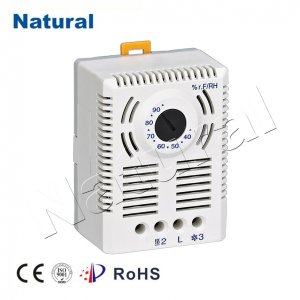Fan Thermostats: The Unsung Heroes of Temperature Regulation

Temperature regulation is a critical aspect of maintaining comfort and efficiency in our homes and workplaces. While we often think of air conditioners and heaters as the primary tools for achieving this, there is another unsung hero working quietly in the background – the fan thermostat. In this article, we will delve into the world of fan thermostats, exploring their functions, benefits, and how they contribute to creating a more comfortable and energy-efficient environment. What is a Fan Thermostat? A fan thermostat, also known as a fan limit switch, is a small but essential device that plays a vital role in controlling the operation of fans in heating and cooling systems. It is typically found in forced-air heating and cooling systems, such as furnaces and central air conditioning units. The primary purpose of a fan thermostat is to monitor the temperature inside the HVAC system and activate the fan when specific temperature thresholds are reached. How Does a Fan Thermostat Work? The operation of a fan thermostat is relatively straightforward. It consists of a bimetallic coil or sensor that expands and contracts with temperature changes. This coil is connected to a switch mechanism. When the temperature inside the HVAC system rises above a certain set point, the coil expands, causing the switch to close. This action activates the fan, which then circulates air through the system, distributing heated or cooled air to the living spaces. Conversely, when the temperature drops below the lower set point, the coil contracts, and the switch opens, turning off the fan. Benefits of Using a Fan Thermostat Energy Efficiency: Fan thermostats play a crucial role in energy conservation. By only operating the fan when necessary, they prevent continuous fan operation, which can be energy-intensive. This results in reduced energy consumption and lower utility bills. Improved Comfort: Fan thermostats help maintain a consistent and comfortable indoor temperature. They ensure that the air is circulated evenly, preventing hot or cold spots in your home. Extended Equipment Life: By preventing the fan from running constantly, fan thermostats can extend the lifespan of HVAC equipment. Continuous operation can put unnecessary strain on the system, leading to premature wear and tear. Enhanced Air Quality: Proper air circulation facilitated by fan thermostats can improve indoor air quality by preventing the stagnation of air and the buildup of dust and allergens. Safety: In some cases, fan thermostats include safety features that can shut down the system if temperatures exceed safe levels. This prevents overheating and potential damage to the equipment. Setting and Maintaining a Fan Thermostat Setting a fan thermostat correctly is crucial to achieving optimal temperature control. Most fan thermostats allow you to adjust the temperature settings to match your comfort preferences. It’s advisable to consult the manufacturer’s instructions or seek professional assistance for accurate configuration. Regular maintenance is also essential to ensure the fan thermostat functions properly. Dust and debris can accumulate over time, affecting its accuracy. Cleaning and inspecting the thermostat periodically can help prevent malfunctions. In conclusion, while fan thermostats may go unnoticed in our daily lives, they are indispensable components of HVAC systems. They contribute significantly to energy efficiency, comfort, and the overall performance of heating and cooling systems. By understanding their role and benefits, homeowners can make informed decisions to enhance their indoor environments while reducing energy consumption and utility costs. Fan thermostats are indeed the unsung heroes of temperature regulation.